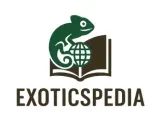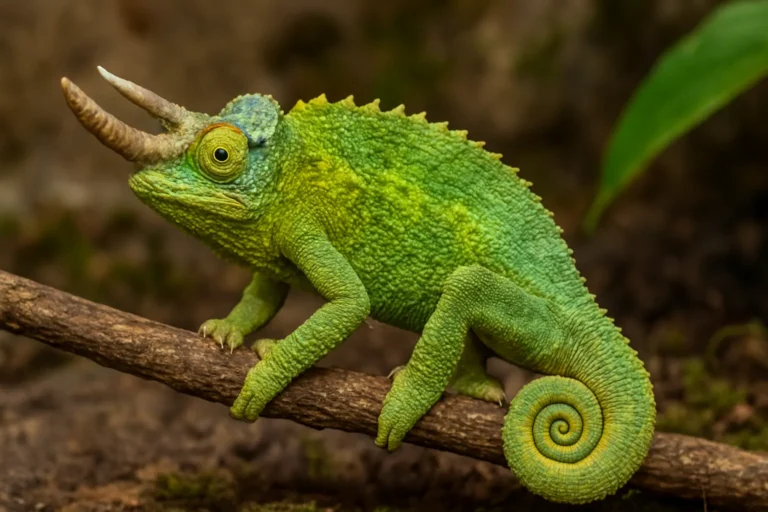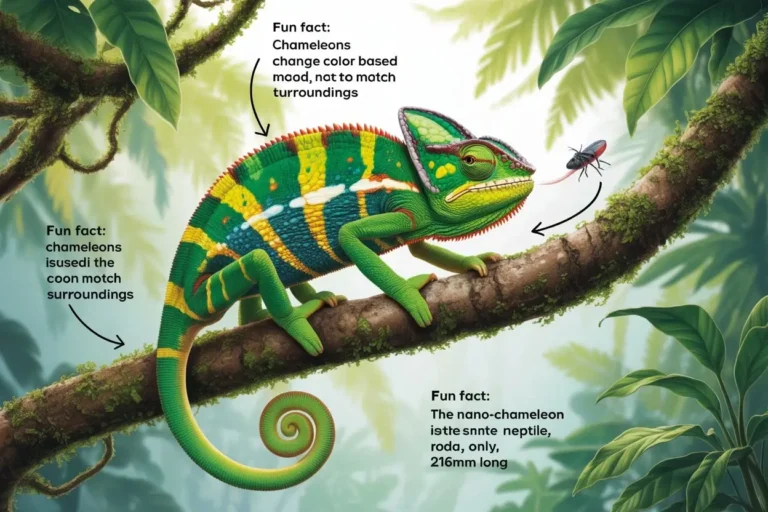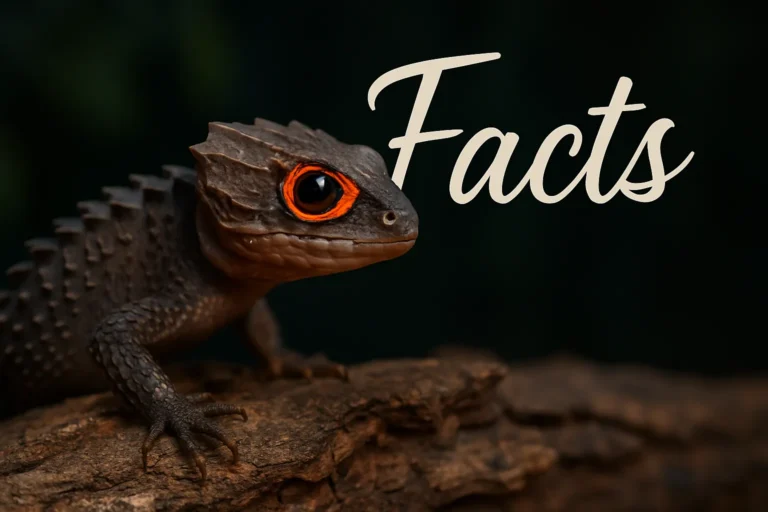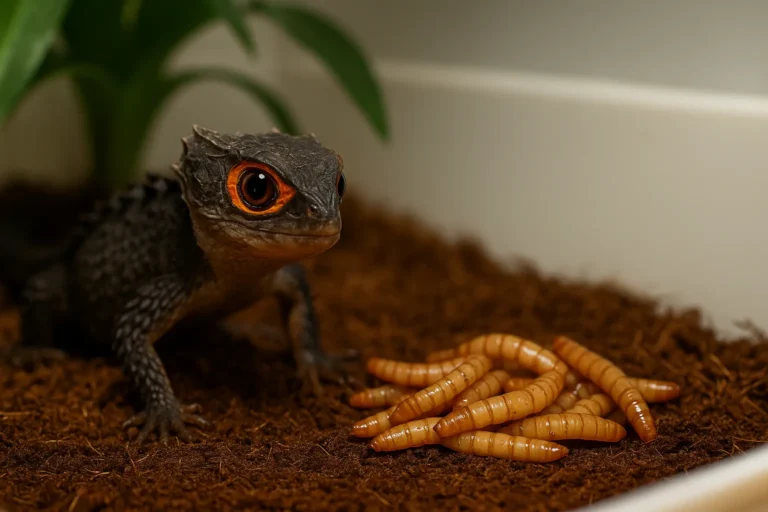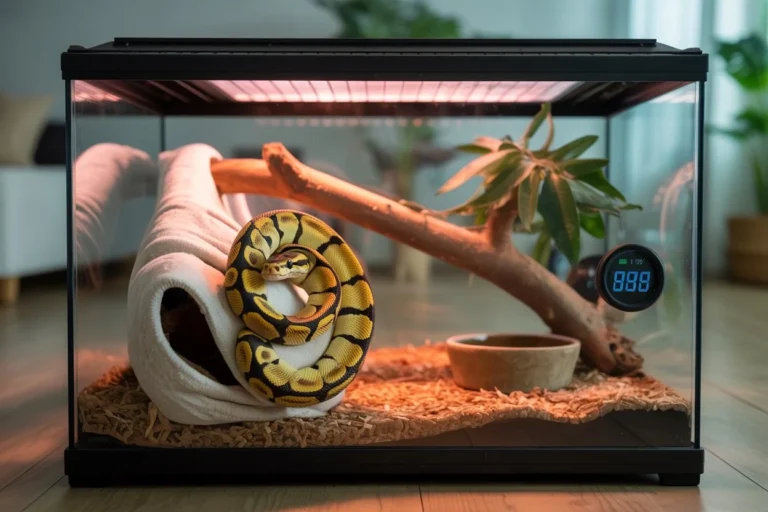Guide to Red-Eyed Crocodile Skink Lifespan: Factors, Care, and Longevity
The red-eyed crocodile skink (Tribolonotus gracilis) is a captivating reptile known for its dragon-like appearance and unique behaviors. Native to New Guinea’s tropical rainforests, these skinks have gained popularity in the exotic pet trade. Understanding their lifespan—and how to maximize it—is critical for responsible ownership. This article explores their longevity in the wild vs. captivity, key care requirements, and strategies to ensure a healthy, long life.
Red-Eyed Crocodile Skink Lifespan: Wild vs. Captivity
In the Wild
In their natural habitat, red-eyed crocodile skinks face predators, environmental stressors, and limited resources, leading to an average lifespan of 5–6 years. Their survival is threatened by deforestation, which forces them into coconut plantations where conditions are less ideal.
In Captivity
With proper care, captive red-eyed crocodile skinks thrive significantly longer, often reaching 10–14 years. Some reports even note individuals living beyond 12 years. This extended lifespan is attributed to controlled environments, consistent food availability, and reduced predation risks.
Factors Influencing Red-Eyed Crocodile Skink Lifespan
1. Habitat Setup
A well-designed enclosure mimics their natural rainforest environment:
- Tank Size: Minimum 20 gallons for one skink; 55 gallons for a pair. Larger enclosures reduce stress and promote natural behaviors like burrowing.
- Substrate: Use moisture-retentive materials like coconut fiber, cypress mulch, or bioactive soil mixed with sphagnum moss (depth: 2–4 inches).
- Humidity: Maintain 70–90% humidity using daily misting, foggers, or automated systems. Low humidity causes dehydration and shedding issues.
- Temperature:
- Daytime: 75–82°F (cool zone) with a basking spot of 80–82°F.
- Nighttime: 70–75°F; avoid drops below 70°F.
- UVB Lighting: Though nocturnal, UVB lighting (e.g., Arcadia ShadeDweller) supports calcium metabolism and prevents metabolic bone disease.
2. Diet and Nutrition
As insectivores, their diet must include variety:
- Feeder Insects: Crickets, dubia roaches, mealworms, earthworms, and hornworms.
- Supplements: Dust insects with calcium (daily for juveniles, every other day for adults) and multivitamins weekly. Avoid over-supplementing vitamin D3 to prevent toxicity.
- Feeding Schedule: Juveniles eat daily; adults every 2–3 days.
Want to know more about diet? Check our complete diet guide for red eyed crocodile skink.
3. Health Issues
Common health issues impacting lifespan include:
- Metabolic Bone Disease (MBD): Caused by calcium deficiency or inadequate UVB exposure. Symptoms include lethargy and skeletal deformities.
- Respiratory Infections: Often due to incorrect humidity or temperatures. Look for labored breathing or nasal discharge.
- Gastrointestinal Issues: Result from parasites, bacterial infections, or substrate ingestion.
Regular veterinary check-ups and prompt treatment are essential.
4. Stress Reduction
Red-eyed crocodile skinks are highly sensitive:
- Minimal Handling: Frequent handling causes stress, leading to suppressed immunity.
- Enrichment: Provide hides, cork bark, and live plants to mimic their natural environment.
- Solitary Housing: Avoid cohabiting males, as they are territorial.
Tips for Maximizing Lifespan
- Bioactive Enclosures: Incorporate live plants and clean-up crews (isopods, springtails) to maintain a self-sustaining ecosystem.
- Hydration: Offer a shallow water dish for drinking and soaking.
- Quarantine New Skinks: Prevent disease spread by isolating new arrivals for 30–60 days.
- Monitor Shedding: Incomplete sheds indicate low humidity; adjust misting routines.
Interesting Longevity Facts
- Parental Care: Females guard their single egg aggressively, boosting offspring survival rates.
- Vocalizations: They emit distress calls when threatened—a rare trait among lizards.
- Play Dead: When stressed, they freeze or feign death to deter predators.
Conclusion
Red-eyed crocodile skinks are long-term commitments requiring meticulous care. By replicating their natural habitat, providing a balanced diet, and minimizing stress, owners can ensure these unique reptiles live a full, healthy life. Whether you’re a novice or experienced keeper, understanding their needs is key to unlocking their impressive captive lifespan.
